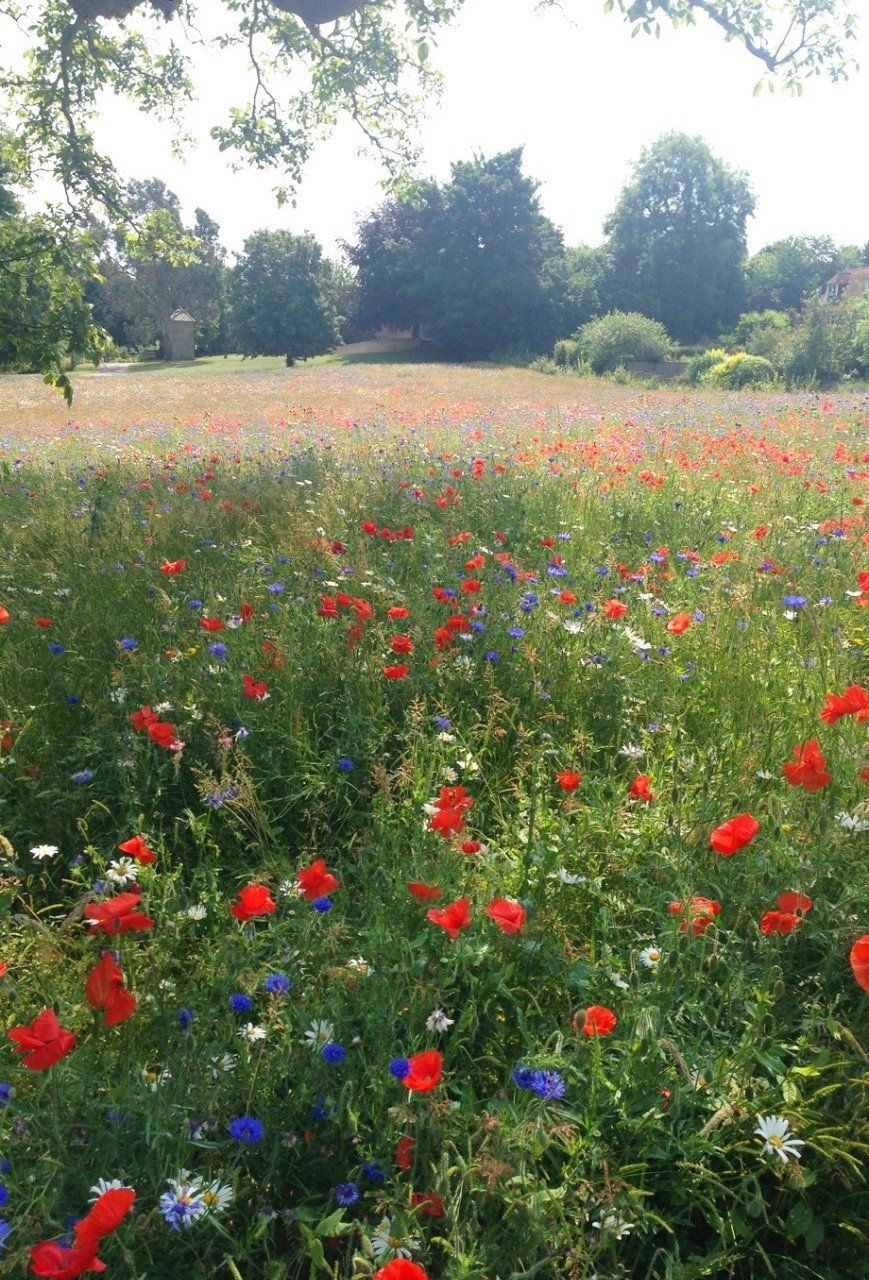How to establish a wildflower meadow from scratch – guest post from The Grass People
Establishing a wild flower meadow is something I am asked about regularly. The first thing I usually tell people who are interested in this type of garden is that it will require a lot of hard work and perseverance – it’s not just as simple as scattering a few seeds. I know this first hand, having started a wild flower area in my garden a couple of years ago, which is still very much a work in progress.
So, when The Grass People – experts in lawns and wild flower meadows – got in touch with me recently, I asked if they would like to write a post for my site about how to create a wildflower meadow from scratch. And here it is below – a very informative and helpful article from the company’s Technical Advisor, Anna Crockard –with step by step advice and guidance to help get you started.
Caption: The Grass People’s ‘Bees and Pollinators’ mix in action
Anna said:
“There are plenty of products on the market that promise an instantaneous meadow with very little preparation required. Products such as wildflower seed bombs suggest that by simply scattering them you can create a wildflower meadow. Of course, this may be successful in some cases and result in wildflower ‘patches’, but, if you really want to establish a wildflower meadow that will last year after year, you must do the preparation first!
“Wildflowers are favored for their bountiful blooms that often last all summer long, and unlike our usual garden flora they require very little maintenance once sown. However, they do have a few prerequisites that are vital for their germination and establishment.
Preparation is key
“If you are planning to sow wildflowers you will most likely have an area in mind of where you would like to have them. Wherever this happens to be, the area should be free from any existing grass, weeds or other flora. If these aren’t removed from the area, your wildflowers will struggle to establish as the more fertile species (grass, weed, flora) will take over. You can remove these by using a turf cutter if the area is particularly large, or you can use the humble garden shovel if it is a smaller area. Once this process is complete, it is recommended that for the best results you remove the top 5-10cm of soil to reduce soil fertility, level the area out and leave the soil a further 6 weeks to cultivate. This 6-week interim and cultivating time will allow any sneaky weeds to pop up, so you can also remove these should they make an appearance before you plan to sow.
“Alternatively, and if you are unable to complete this level of work, you can introduce Yellow Rattle to your chosen area to help weaken any existing grasses – but bear in mind this may take a little bit longer than complete removal and will need to happen within a selected time period. To use this method, cut your grass as short as possible at the end of summer and scarify (rake) the area aiming for 50% bare soil. Sow your Yellow Rattle before winter sets in – it will germinate and bloom in early Spring and begin to weaken the existing grasses. At which point you can then consider introducing new wildflower seeds by scarifying the area and sowing.
Picking the right mix
“Once the area is prepared, it’s time to consider what wildflower seed to go for. Although packets of single wildflower seeds exist, it can be difficult as an individual to gauge the right balance of all the wildflowers you want, and you may end up overcrowding your wildflower meadow. With pre-mixed wildflower seeds, you can get a balanced blend of some great varieties. There are mixes on the market that are 100% wildflower seed and this provides an ornamental display that will bloom in spring and summer. There are also mixes that contain arable grasses alongside wildflower seed – this provides a year on year wildflower meadow and habitat for wildlife. The Grass People have a whole host of UK native wildflower seed to suit every need – from 100% annuals and perennial seeds to mixes made for specifically attracting bees and bespoke blends for shaded areas and clay and sandy soils.
“If you consider your soil type to be normal and the area where you plan to sow your wildflower seed relatively free from shade, you can sow any wildflower mix based on your preference of the flora within it. However, if you do have problematic soils or the area is heavily shaded, you may benefit from a more specialised mix that will contain wildflowers that are tolerant of these conditions. If you tick a few of these boxes and you’re unsure of what mix to go for, you can contact The Grass People to help guide you on the best mix that will help you achieve the results you want.
Now for the easy part!
“Once you have a clear seedbed and have your wildflower mix ordered, delivered and ready to use, everything else is a doddle! Typically, the best time to sow wildflower seeds is in Autumn as this will give you the earliest display of wildflowers. However, wildflower seeds can be sown throughout the year with bloom usually taking place after 60-80 days. Wildflower seeds need to undergo ‘stratification’, a process wherein the seed freezes and this helps to kickstart its germination. The Grass People’s mixes are kept in cold warehouse conditions all year round, so are ready to sow when you are! To sow your wildflower seeds, simply scatter them at the recommended rate of 5g per m2. This allows ample room for the seeds to individually grow and bloom. Once scattered, lightly rake the area to cover the seed and water well. If there are prolonged dry spells after you have sown the seed, remember to water the seed so that it doesn’t dry out. And knowing UK weather, this is only likely to be an issue in summer.”


